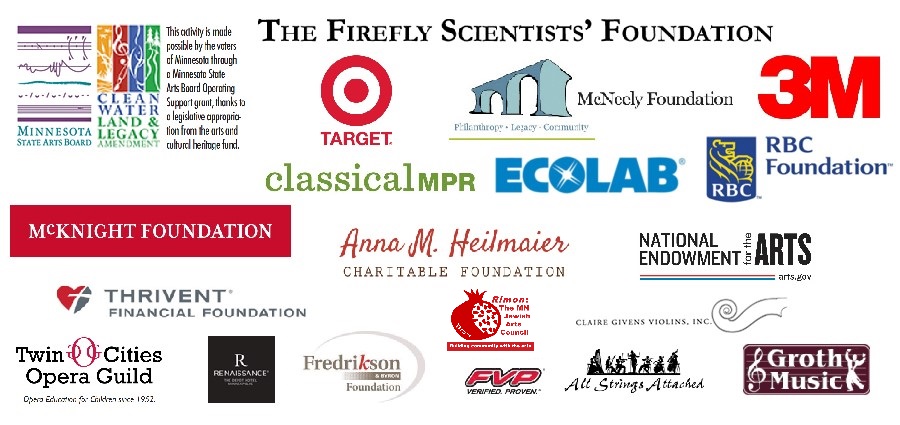Please click here for COVID-related updates
Serenade
Fri. Feb 18 Metropolitan State University 7pm
Main Auditorium, 700 East 7th Street, St. Paul, 55106
SATURDAY Feb 19 Basilica of St. Mary 2pm
1600 Hennepin Ave Minneapolis, 55403
Program
WaltzWilliam Gomes
World premiere and recipient of the Minnesota Sinfonia Call for Scores with support from the McKnight Foundation
Petite SuiteClaude Debussy
Serenade for StringsPeter Tchaikovsky
Program Notes
WaltzWilliam Gomes (b. 1998)
World premiere and recipient of the Minnesota Sinfonia Call for Scores with support from the McKnight Foundation
My waltz is relatively straightforward and includes what I hope is a touch of quaintness and even elegance. I conceived it as a symphonic escapade, with little quirks scattered throughout. This composition was written over the summer of 2021 for the Minnesota Sinfonia’s annual New Works competition with the intention of my developing skills writing for orchestra, meeting the ensemble’s needs, and offering the listeners some fun along the way. wg
Petite SuiteClaude Debussy (1862-1918)
Claude Debussy and Maurice Ravel were the two major pillars of French music during the early part of the twentieth century. Their music, now labeled Impressionism, was revolutionary and corresponded to the (also revolutionary) movement in painting which bears the same name. Like the French painters Monet, Renoir and Degas, these composers wanted to convey moods and impressions, rather than exacting and straightforward renderings. Their music is often very sensuous and must be performed emphasizing the many instrumental colors inherent in the writing. And in Debussy’s case, he constantly repeated little phrases to blur the overall forms of the compositions, and to make the listener concentrate more on the individual phrases and instrumental colors than on the composition’s overall structure.
Most of Claude Debussy’s output was for the piano. His few orchestral works were very successful and are still in the repertoire to this day. Because of this imbalance, many of the piano works have been transcribed for orchestra, or other instrumental combinations. The Petite Suite (translates as “Little Suite”) is a set of four piano pieces. Even though it has been arranged for several combinations of instruments, including orchestra, I took the liberty of creating a new arrangement for the Sinfonia, which of course is tailored for our instrumentation. The first movement translates as “in a boat,” and the opening gives an impression of the waves (listen for the gurgling of the bassoon and clarinet, and the little whooshes of the violins). The second movement, “cortege,” provides a musical picture of a procession. It has a constant flow of quickly moving passage work in the opening, a sense of waves of motion in the middle, followed by the return of the quick thematic motion of the opening. The third movement is a beautiful minuet, and the last movement, which is titled “ballet,” for me is the most energetic and fun, and a work that can easily be choreographed for the stage. jf
Serenade for Strings in C MajorPeter Tchaikovsky (1840-1893)
Peter Tchaikovsky is one of Russia’s most famous and popular composers. Known the world over for his ever-popular ballet, The Nutcracker, he was a gifted composer of symphonies, concertos, operas and other ballets (including Sleeping Beauty – the same music that Walt Disney used for his animated feature film). Tchaikovsky was a romantic composer who was also very proud of his Russian heritage. His melodies were often songlike and attractive to the average listener, and there was a spirit and excitement that permeated his output that can only be described as “Russian.” Folk music, songs and stories were important, and they influenced much of his music. At times he would incorporate folk melodies into his works, and at other times he would simply create tunes that sounded like folk music. One can identify several songs that appear in his symphonies, piano music and other orchestral works, including two that were used in his Serenade for Strings.
The Serenade for Strings is a four-movement work that was one of the composer’s favorites. It was written only for string orchestra (violins, violas, cellos and basses), and to this day is considered one of the major “pillars” of the romantic string orchestra repertoire. The first movement is a tribute to Mozart and was Tchaikovsky’s attempt to create a piece that he might have composed had he lived during Mozart’s time. When describing his feelings towards Mozart he wrote:
Do you know that when I play Mozart, I feel brighter and younger – almost a youth?
On another occasion, when referring to Mozart’s music, he called it a “sacred delight.” The Serenade has several distinguishing characteristics, including one of the most beautiful and satisfying waltzes in the entire repertoire. Folk songs permeate the work as well – the fourth movement contains two folk songs. The slow introductory opening is based on a work song (about hauling) from the Vulga region, and the second section, which is a perpetual motion, is based on Pod yablonyu zelyonoyu, which translates as “Under the Green Apple Tree.”
One of my fondest memories of this work was when the old Minneapolis Chamber Symphony and I worked with the late Loyce Holton and her Minnesota Dance Theatre. Loyce staged Serenade, George Balanchine’s classic adaptation of the Tchaikovsky Serenade. For me, it was a joy to accompany Loyce’s troupe in one of the great ballet and orchestral masterpieces, and to watch the dancers create a completely different and exhilarating vision of music that, until then, I only knew as a string orchestra piece. In my forty-three plus years of conducting in the Twin Cities, that remains one of my most endearing and favorite memories. jf

